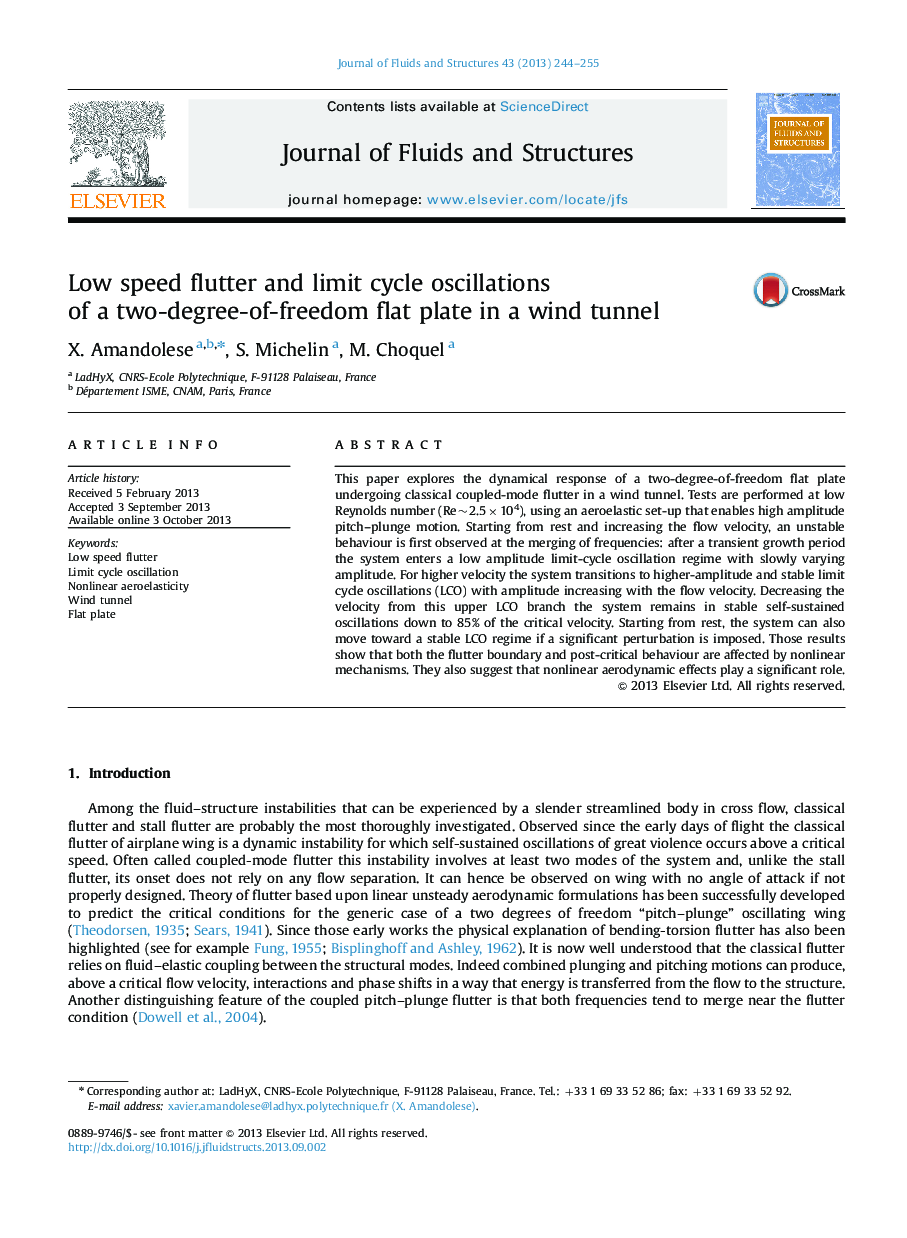| Article ID | Journal | Published Year | Pages | File Type |
|---|---|---|---|---|
| 796968 | Journal of Fluids and Structures | 2013 | 12 Pages |
This paper explores the dynamical response of a two-degree-of-freedom flat plate undergoing classical coupled-mode flutter in a wind tunnel. Tests are performed at low Reynolds number (Re~2.5×104), using an aeroelastic set-up that enables high amplitude pitch–plunge motion. Starting from rest and increasing the flow velocity, an unstable behaviour is first observed at the merging of frequencies: after a transient growth period the system enters a low amplitude limit-cycle oscillation regime with slowly varying amplitude. For higher velocity the system transitions to higher-amplitude and stable limit cycle oscillations (LCO) with amplitude increasing with the flow velocity. Decreasing the velocity from this upper LCO branch the system remains in stable self-sustained oscillations down to 85% of the critical velocity. Starting from rest, the system can also move toward a stable LCO regime if a significant perturbation is imposed. Those results show that both the flutter boundary and post-critical behaviour are affected by nonlinear mechanisms. They also suggest that nonlinear aerodynamic effects play a significant role.
